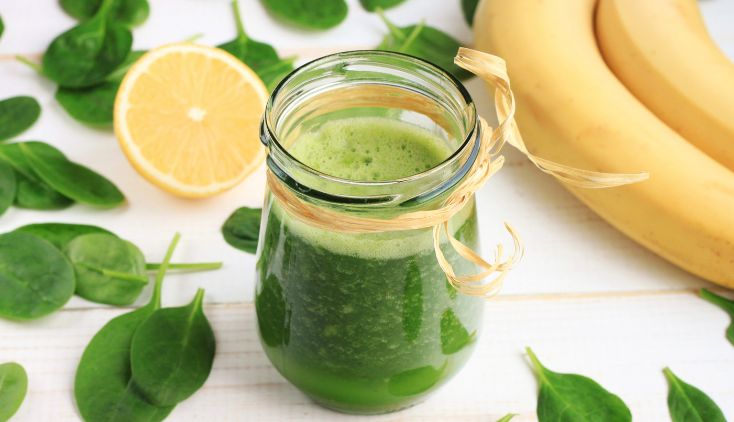Boosting Dopamine Levels: Dietary Strategies
Parkinson’s disease is a neurological disorder that affects the central nervous system. It predominately affects the dopamine cells in the brain. According to the Parkinson’s Foundation, worldwide, Parkinson’s affects 10 million people.
Symptoms of Parkinson’s disease include:
- Shaking and tremors.
- Balance issues.
- Changes in the voice.
- Stiffness in the legs and arms.
- Coordination difficulties.
Currently, there is no cure for Parkinson’s disease. But lifestyle factors, such as diet, may play a role in dealing with symptoms. The article below looks at how foods that may boost dopamine levels might help people with Parkinson’s disease.
How Diet Affects Parkinson’s Disease
According to research in the journal BioMed Research International, about 10% of cases of Parkinson’s disease are caused by a genetic mutation. The other 90% of cases of Parkinson’s disease develop from unknown causes. Researchers know that Parkinson’s is associated with a deficiency in dopamine cells.
Dopamine is a neurotransmitter in the brain. It helps control concentration, motivation, movement and other brain functions. Dopamine levels decrease in people with Parkinson’s disease. Researchers continue to study how raising levels of dopamine naturally through diet might help slow the progression of the disease.
Dopamine Foods and Parkinson’s Disease
A specific diet will not cure Parkinson’s disease. But because people with Parkinson’s have a lack of dopamine cells, it makes sense to try to boost dopamine levels. Doctors do not have one diet they recommend for people with Parkinson’s disease. But eating foods that boost dopamine levels or the building blocks of dopamine might help. Certain foods may also help protect dopamine cells from further damage.
The Best Dopamine Foods for Parkinson’s Disease
Since most dopamine-boosting foods, such as fruits and vegetables, are part of a healthy diet, it most likely will not hurt to add this nutritional approach to a comprehensive Parkinson’s treatment plan.
Some of the best dopamine foods for Parkinson’s disease include:
Turkey
Turkey contains tyrosine, which is an amino acid. It is one of the building blocks of dopamine. According to research in the journal Comparative Study, increasing levels of tyrosine may help improve dopamine. Other sources of tyrosine include beef and dairy.
Berries
Berries, such as blueberries and blackberries, are high in antioxidants. Foods high in antioxidants may help protect the dopamine cells, which might decrease the number of cells lost. This may slow the progression of the disease. Berries are easy to incorporate into the diet. For instance, add some to breakfast cereals, salads or smoothies.
Turmeric
Turmeric is a spice that appears to have some antioxidant and anti-inflammatory benefits. It may also help improve dopamine levels. Incorporate turmeric into your diet by adding a little to soups and rice dishes.
Spinach
Leafy green vegetables, such as spinach, are rich in vitamin B6 and folate. These nutrients may help raise dopamine levels in the brain. By increasing dopamine, it may improve mood and cognitive function in people with Parkinson’s disease. Other sources of leafy green vegetables include kale and collard greens.
Bananas
Bananas contain tryptophan and I-tyrosine. Both are amino acids that may play a role in brain function. Tryptophan helps increase serotonin levels, which can affect mood. The body convents I-tyrosine into dopamine, boosting levels. Add bananas to fruit salads, cereal and smoothies.
Walnuts
Walnuts contain magnesium, which is needed to produce dopamine. Walnuts also provide protein, which is beneficial for muscle strength in people with Parkinson’s disease. Sprinkle walnuts into salads or yogurt to get a few servings each week.
Dark Chocolate
Dark chocolate may also help with Parkinson’s disease symptoms. It contains phenylethylamine, which may increase dopamine levels. Consider eating a small portion of dark chocolate a few times a week.
Other Dietary Tips for Parkinson’s Disease
It is always best to talk with your doctor about nutritional goals. A person’s age and other underlying medical conditions may affect their dietary choices.
But in general, additional diet tips for people with Parkinson’s disease include the following:
Add Yellow Mustard
According to the Michael J. Fox Foundation For Parkinson’s Research, eating foods such as yellow mustard may help with muscle cramping that can occur with Parkinson’s disease. Staying well-hydrated may also help.
Include Plenty of Fresh Fruits and Vegetables
Research in Oxidative Medicine and Cellular Longevity indicates that eating fruits, vegetables, seeds, fish and olive oil is linked to lower rates of Parkinson’s disease progression.
Limit Dairy Products
Research has found that certain types of dairy products are associated with higher rates of Parkinson’s progression. The link appears to be the strongest between milk and ice cream.
Eat Whole Grains
Adding fiber to the diet, such as eating whole grains, may help with constipation. Constipation is a common symptom of Parkinson’s disease due to the slowing of the digestive system.
Do you need to lower your cholesterol? Read on to find out about some supplements that help.
Article Resources
- Diet & Nutrition
- What is Parkinson's?
- Fighting Parkinson's Disease with Exercise and Diet
- 6 superfoods to enhance brain function in Parkinson’s
- Dietary Factors in the Etiology of Parkinson's Disease
- Food for thought: association between dietary tyrosine and cognitive performance in younger and older adults
- Role of Diet and Nutritional Supplements in Parkinson's Disease Progression
